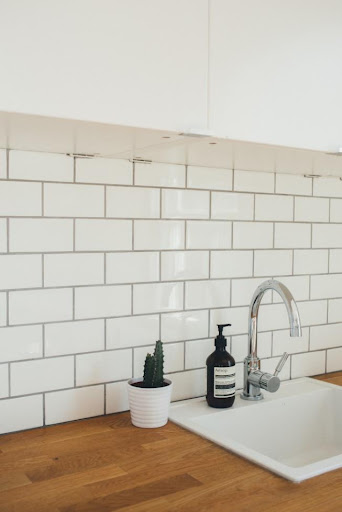Grout is a material used to fill the spaces between tiles in order to keep them in place and prevent water from seeping through. There are several types of grout, each with its own set of benefits and drawbacks. Which one is right for your project? Let’s take a look at the most common types of grout and find out!
Sanded vs. Unsanded
Sanded cementitious grouts include fairly large sand particles that can be seen and felt—they look and feel gritty. Sanded grout is normally recommended when the grout seams are 1/8 inch wide or more, as the sand provides extra bonding power that prevents cracking. Some care is required if using sanded grouts on highly polished tiles, as the sand can actually scratch the surfaces. Testing the grout on sample tile is a good idea.
Unsanded grouts have a much smoother texture, since the mineral particles they contain are very fine powders that have no noticeable grit. They are used with grout seams that are 1/16 to 1/8 inch wide. When used with with wider seams, unsanded grouts have a tendency to crack because they lack the binding power offered by sanded grouts. Source: TheBalancesMB
Epoxy
There are some settings — notably those exposed to acids and greases — in which even an additive-enhanced, sealed grout falls short. Such harsh conditions call for epoxy grout. Made up of two parts, resin and hardener, epoxy grout comes in both sanded and unsanded varieties and is impervious to most chemicals and stains. Early epoxies were unforgiving and difficult to apply, and had just a 45-minute pot life. This made them fast to cure but slow to be embraced by many tile setters, and anathema to beginners.
The new generation of epoxies contain detergents in the hardeners, which make for quick cleanup with water and improve workability. Because epoxy can discolor porous surfaces, such as unglazed quarry tiles or limestone, these should be sealed before grouting. But its stain resistance, hardness, and durability make epoxy grout the best choice for showers, kitchen counters, backsplashes, floors, and other heavy-traffic areas. Source: ThisOldHouse
Polymer
Differing from an epoxy grout, polymer tile grout ensures color quality. It can come in handy for disguising irregularities in handmade tiles and bridging the joint thickness in some patterned installations. It is considered high-performance and is designed for more demanding spaces.
Polymer tile grout is cement-based with added polymers that are activated once they hit water. The chemical reaction increases the grout’s water, abrasion, and chemical resistance and adds an incredible amount of strength.
Polymer tile grout is a single component material that is completely stain proof. The first generation was made from urethane and the newer types are a form of siliconized acrylic. Urethane allows for manufacturers to make a translucent grout for glass installations and is easier to clean up than acrylic. Source: ArchToolbox
Not sure which type of grout is best suited for your needs? Call us for free advice!



